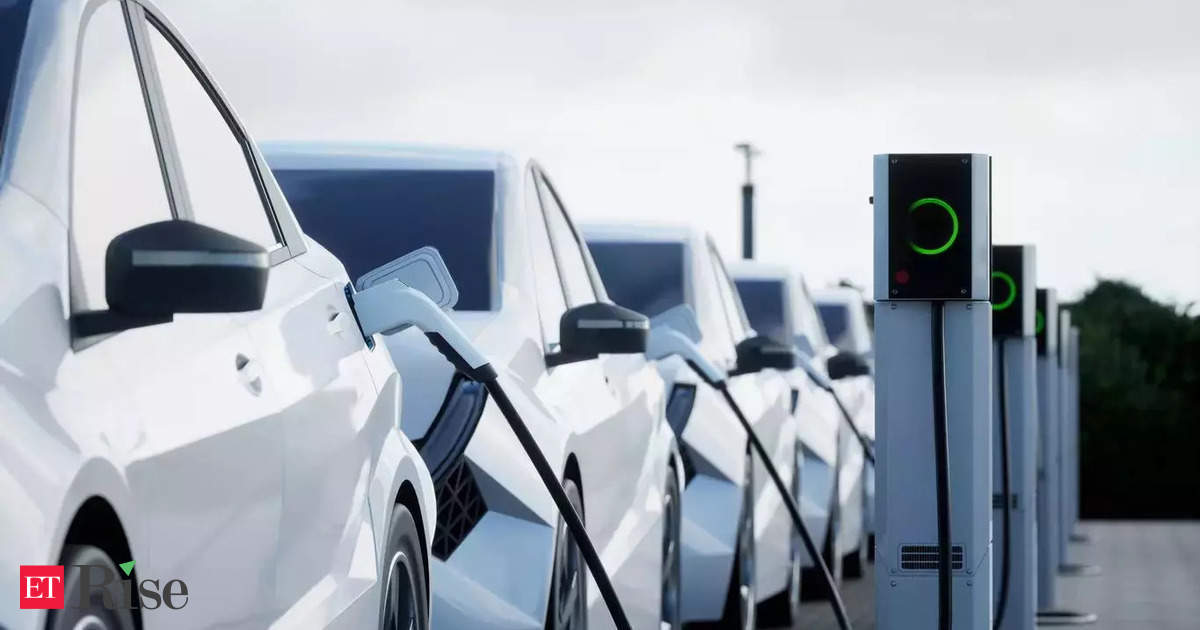Many of these problems can be attributed to the load. It is no coincidence that PorcelainLast year, 60% of the world’s electric vehicles were sold, with 70% of the world’s public car plugs. The success of PHEVs relative to other EVs is an indicator of a burgeoning market of consumers interested in electric transportation but not yet convinced they can survive without a gasoline backup. To solve that problem, we need to fix the broken business model of public charging.
This will be easier said than done. Since the dawn of the automobile, selling only fuel has been a cursed business. Commodities are typically competitively priced, so margins are slim, but overhead is high, because it’s not cheap to build and operate a chemical storage depot on prime land. For decades, such operations were more commonly known as a “service station” than a “gas station” because early cars were so unreliable that owners made money as mechanics rather than retailers.

Convenience stores and restaurants were gradually added to the revenue mix, but always precariously, with oil companies backing them in the interest of mass automobile adoption. The basic facts haven’t changed much. Alimentation Couche-Tard Inc., the Canadian chain currently weighing a bid for 7-Eleven operator Seven & i Holdings Co., gets three-quarters of its sales from fuel but less than half its profits; margins at convenience stores are about three times higher.
 iStock
iStockSwitch to electric and the problems increase. Direct current (DC) fast chargers — those that can charge an EV in an hour or less, and the only practical alternative to an electric refueling model at gas stations — are an order of magnitude more expensive and complex than home or work chargers that release electrons throughout the day or night. Some of the fast chargers hold so much charge that they need cooling systems on their cables to keep them from overheating. Most will also require trenching, installing transformers and expensive studies.

In California, a DC fast charger costs $1,999 per kilowatt, before government rebates that reduce the cost by about two-thirds. On that basis, the total price of a 350-kilowatt station that can recharge a car at the speed of a gas station is close to $700,000. That immense capital expenditure must be amortized in a market where you’re competing not only with rival retailers but also with home and workplace chargers whose electricity is much cheaper. This suggests that governments have vastly underestimated the work they need to do to get fast charging up and running, which is a precondition for meeting their vehicle fleet electrification goals. A study last year estimated that deploying the 500,000 stations promised under the US Inflation Reduction Act DC chargers would cost $74 billion, roughly 10 times the funding allocated in the bill. Another study last month found that an operator in El Paso, Texas, would lose money unless it added a convenience store partner and perhaps public funding as well.
 Bloomberg
Bloomberg
None of the listed charging networks are profitable at this stage, BloombergNEF analyst Ryan Fisher wrote in April, while operators are in a period of experimentation as they try to find the model that works.
The good news is that none of this is rocket science. In fact, the path has already been blazed by the existing fuel retail industry, and the government rebates already on offer are a recognition of the challenges ahead. Retailers, keen to attract cash-strapped EV owners and seeing an opportunity to wrest market share from petrol stations, have been active participants; Carrefour SA is in the process of setting up 5,000 stations and Walmart Insurance Company. The country wants 10,000 by 2030. That is probably the most viable future for fast charging: as a teaser product that tempts buyers to buy things that can be turned into a profit. It doesn’t sound like a very tempting proposition, but it is the principle on which the $4.2 trillion oil and gas industry was built. The world has solved the problem of fuel retailing in the past and will solve it again in the future.
Disclaimer:
The information contained in this post is for general information purposes only. We make no representations or warranties of any kind, express or implied, about the completeness, accuracy, reliability, suitability or availability with respect to the website or the information, products, services, or related graphics contained on the post for any purpose.
We respect the intellectual property rights of content creators. If you are the owner of any material featured on our website and have concerns about its use, please contact us. We are committed to addressing any copyright issues promptly and will remove any material within 2 days of receiving a request from the rightful owner.

